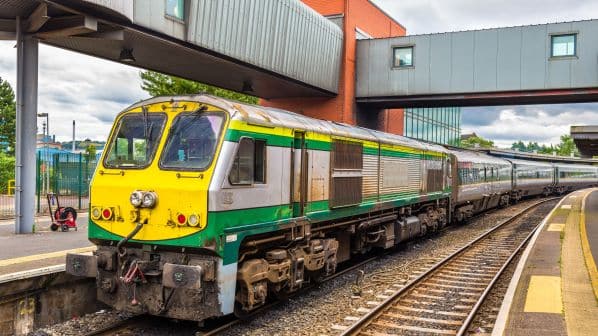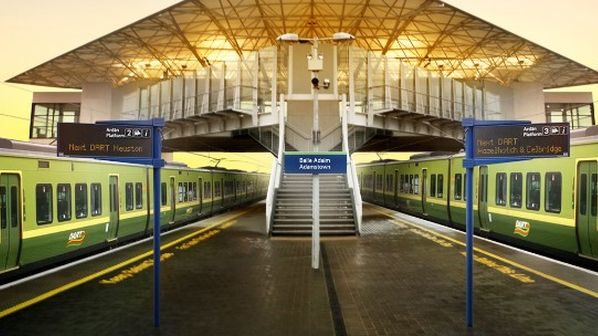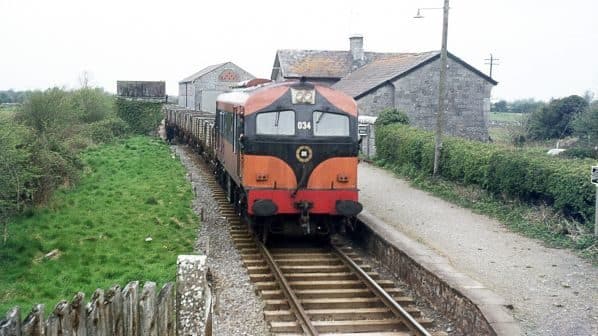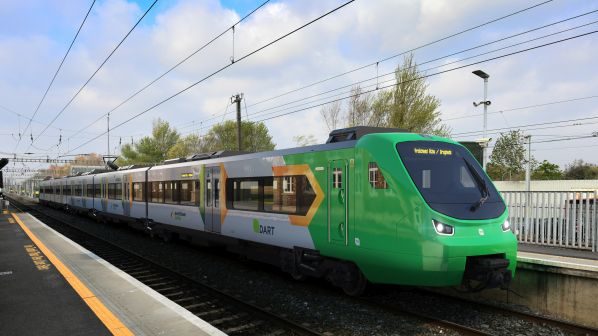IRELAND’s Department of Transport and the Department for Infrastructure of the Northern Ireland government have published for consultation the final findings and recommendations from the All-Island Strategic Rail Review, launched in April 2021 and undertaken by Arup.
Aiming to inform policy and future strategy in both Ireland and Northern Ireland, the review has focused on how the rail network could contribute to decarbonising transport, and has recommended a major investment programme to help both governments achieve net zero carbon emissions by 2050.
According to the Department of Transport, the full capital cost at 2023 prices is estimated at €36.8bn, of which €27.6bn would be spent in Ireland and €9.2bn in Northern Ireland.
The departments says that if split evenly across 25 years at 2023 prices, spending in Ireland would amount to capital investment in rail of €1bn per year over and above existing plans, “roughly equivalent to peak annual investment in the motorway network in the late 2000s.”
Delivering the recommendations of the review would see 80% of train-km operated by electric rolling stock, with battery and hydrogen traction delivering the remainder.
Other infrastructure upgrades and new line construction would result in 700,000 more people living within 5km of a railway station, 25% more than at present, with journey times reduced by up to 50% and an hourly or even half-hourly service between key cities.
More local services in Dublin, Belfast, Cork, Limerick, Galway, Waterford and Londonderry would enable passenger market share to be doubled, while 66% of freight tonnage would pass through rail-served ports.
Developing the rail network in this way would deliver a €20bn boost to the island’s economy, according to the review.
Low base
The island of Ireland currently has 2300km of 1600mm-gauge railway, with 1944km operated by Irish Rail (IÉ) and 357km operated by Translink in Northern Ireland.
While recent investment contributed to a 37% growth in passenger traffic between 2011 and 2019, with a record 65 million passengers carried in 2019, modal share remains low at 3% of all passenger-km and below the European Union (EU) average of 8%. Rail freight modal share is now at a historical low of less than 1% of total tonne-km.
Similarly, Ireland currently has the lowest proportion of electrified routes to total route length in the EU, and there is no rail electrification in Northern Ireland.
The government of Ireland is currently investing heavily in further 1.5kV dc electrification to extend the Dublin Area Rapid Transit (Dart) commuter network, which will increase the length of electrified railway from 50km to 150km or 5% of island route length.
As the most viable means of decarbonising the railway, the review recommends a rolling programme of ac electrification suitable for operation at speeds of up to 200km/h on the core inter-city routes, coupled with the deployment of hybrid trains with battery or hydrogen traction on regional lines.
Electrification would be undertaken on the Dublin - Belfast main line, and the Dublin - Cork main line with its connecting routes from Kildare to Kilkenny and Waterford, from Portarlington to Athlone and Galway, and from Limerick Junction to Limerick.
Given the long lead in times for the procurement and delivery of rolling stock, and its relatively long operational life, the review recommends that planning for the deployment of electric and hybrid traction across the island should start soon.
To cut inter-city journey times and enable more commuter services to call at intermediate stations, track doubling would be undertaken on the Portarlington - Athlone, Kildare - Kilkenny and Maynooth - Mullingar sections of the IÉ network, while four tracks would be provided between Connolly and Spencer Dock in Dublin and Clongriffin on the main line to Drogheda and Belfast.
Work to upgrade the core inter-city network for operation at up to 200km/h would include realigning some sections where sharp curves and level crossings currently require trains to reduce speeds. Passing loops could be installed on busy sections to accommodate growth as longer-term solutions are developed, while upgraded signalling and rolling stock could be delivered incrementally as part of a wider renewals programme.
Short sections of new railway are proposed at three locations to help provide the additional capacity required for faster and more frequent passenger services. These include Belfast - Newry in Northern Ireland, currently constrained by its alignment and high number of level crossings.
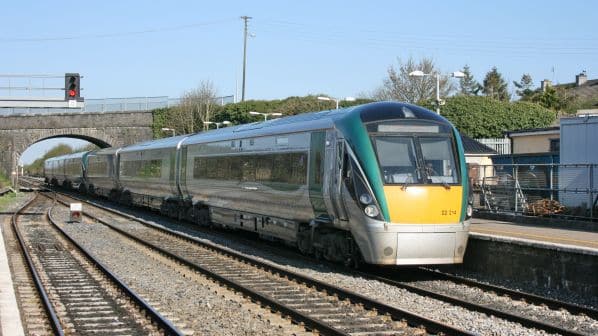
The Dublin - Drogheda corridor is expected to become busier when Dart commuter services are extended to Drogheda. As an alternative to widening the existing railway to four tracks, the review says that building a new alignment from Clongriffin to Drogheda along the M1 motorway corridor would be shorter, deliver faster journey times, require fewer significant level crossings, require less land, generate less disruption to existing services during construction, and would have a more limited impact on the environment.
As the commuter market to the southwest of Dublin grows, the section of the Cork main line from Hazelhatch to Kildare and Portarlington is expected to become busy. As an alternative to providing four tracks on this section, a new alignment would be shorter and avoid new construction close to the Curragh race course.
Freight
On freight, the review says that track access charges “which are reportedly among the highest in Europe” form a major barrier to growth, and it therefore recommends reducing them by means of government subsidy or support in the short term.
Dublin Port will play a key role in growing rail freight in Ireland, and the review recommends the development of a “sustainable solution” for rail access to the port. It says that current access is poor and suffers from significant conflict with road traffic, while the Poolbeg area earmarked for development under the port’s 2040 masterplan is not connected to the rail network at present.
Connections should also be improved to other major ports that are currently underserved by rail, including Foynes, Waterford, Marino Point on the Cork - Cobh branch, and Rosslare Europort.
The review recommends the development of a network of inland terminals close to major cities on the rail network, especially where there is good access to major roads, limited impact on communities and passenger traffic, and good access to industrial clusters.
Potential locations include the Upper Bann area for Northern Ireland, Limerick Junction, north of Cork, Athenry, Sligo and to the west of Dublin.
Consultation on the All-Island Strategic Rail Review and its associated Strategic Environmental Assessment (SEA) closes on September 29.
The minister for transport and government in Ireland and the minister for infrastructure in Northern Ireland will then be asked to approve the final review incorporating any changes made as a result of the SEA process. Subject to these approvals, it expected that the final review will be published around the end of this year.
For details of major infrastructure projects around the world, subscribe to IRJ Pro.
